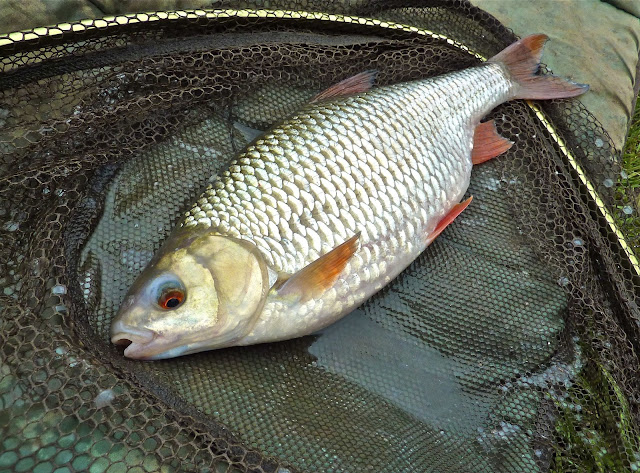 |
| bags of big roach would often include two pounders |
Those of us who are old
enough to have a free bus pass will remember the good old days when our local
River Stour was full of big roach, with two pounders a realistic possibility
every day and all wildlife flourishing.
 |
| cormorants are big birds with big appetites |
 |
| roach are a favourite prey - these are some of the survivors from cormorant attack |
Then in the 1980’s the invasion
of non-native cormorants from Europe increased dramatically, the annual total
reaching upwards of 23,000 birds every winter. Each cormorant eats about 1lb of
fish every day and with roach being one of their favourite meals, our river
fisheries were rapidly decimated.
 |
| the famous 'Roach Bay' on Wimborne's River Stour with hungry cormorants hunting our fish |
 |
| the clubs regular match results over ten years charts a decline to zero roach - nothing caught = no matches |
 |
| big roach are targeted first - this one weighed 1lb12ozs |
As a result, some of the
passionate roach anglers on our committee recently tackled the problem full on
and applied to Natural England to control the birds by scaring or shooting. We
were granted a licence to remove three birds and our Chairman scored three
bull’s-eyes.
 |
| BANG! - job done ... meaning some more of our native wildlife will survive, including our fish |
The removal of just three birds may seem pathetic but as each
cormorant eats at least 100lbs of
fish every winter, three dead birds means that at least 300lbs of our
roach have been saved to fight another day … and some of the survivors will
probably grow on to become the dreamed of two pounders. The fishing is already
improving.
 |
| logging your sightings means more fish for us to catch |
Better still, the club is
putting the facts together to enable an Area Based Management Licence to
be applied for and that means we will be able to control cormorants on all the
club’s waters and remove more of them, a win win situation all round.
But YOU MUST HELP because we
won’t be allowed to control more cormorants if you don’t log your sightings on
the clubs website. It only takes a couple of minutes and we need EVERYONE TO DO
IT, wherever you see a cormorant, anywhere around our club waters.
 |
| they can be difficult to scare when hungry |
Armed with
the records of sightings, we have the evidence to prove that we have a problem. No one likes killing wildlife but we have a choice, non-native birds or our native wildlife that belongs here. Fewer cormorants means more fish will survive for our herons, grebes, egrets, otters and kingfishers to eat and every member
to catch and enjoy ... and it's important to remember that fish are wildlife too and an essential part of a flourishing ecosystem.
Bravo to all those who are helping to achieve a healthy balance of wildlife on our waters. Happy days
are here again.











